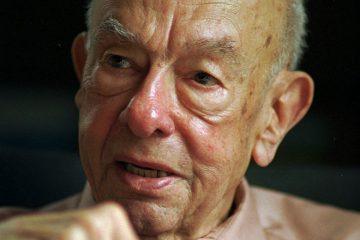Gary Kemp at the TLS:
 Willard Van Orman Quine is well known to the average analytic philosopher. True, he disdained much of the Pandora’s box of conceptual playthings often thought necessary for serious work in analytic philosophy nowadays, and his doctrines are thought to have been largely superseded. But he is treated by many – along with the earlier thinkers Gottlob Frege and Bertrand Russell – as an important intellectual ancestor, who developed many of the puzzles, paradoxes and paradigms that have dominated hardcore analytic philosophy for decades from the 1950s and 1960s.
Willard Van Orman Quine is well known to the average analytic philosopher. True, he disdained much of the Pandora’s box of conceptual playthings often thought necessary for serious work in analytic philosophy nowadays, and his doctrines are thought to have been largely superseded. But he is treated by many – along with the earlier thinkers Gottlob Frege and Bertrand Russell – as an important intellectual ancestor, who developed many of the puzzles, paradoxes and paradigms that have dominated hardcore analytic philosophy for decades from the 1950s and 1960s.
Certain Quinean doctrines do continue to come up frequently: the untenability of the traditional “Analytic–Synthetic” distinction (a distinction between statements the truth or falsity of which depends only on its words, as in “No bachelor is married”, and those that depend also on particular facts, as in “the cat is hungry” – a distinction that was thought by many to be the key to various problems in the theory of knowledge); the “web of belief” metaphor (non-metaphorically: that no statement, not even apparent certainties such as 2+2=4, is in principle immune to revision); the unavoidability of the assumption that in addition to tables and trees there really are abstract objects such as numbers (on pain of hamstringing science); the Indeterminacy of Translation (that in principle one correct translation of a sentence – any sentence, say one of Czech – might conflict with another correct translation of that same sentence, and they might even say the opposite of the other); that there is “no entity without identity” (that a scientific use of a term for a kind of thing requires a means of settling whether one of them is the same as another); that science has no serious need of modal logic (the logic of necessity and possibility); that “to be is to be the value of a bound variable” (which is rather too complicated to go into here).
More here.
